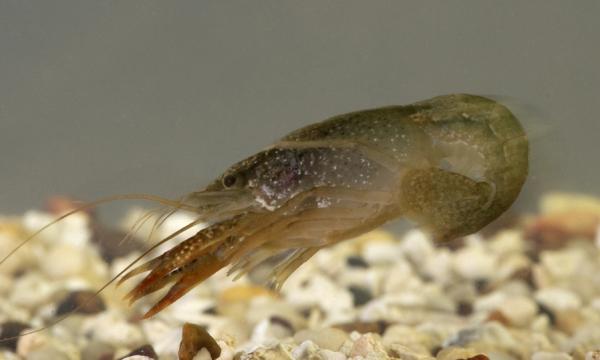We're open daily! View holiday hours
Science News
Crayfish Decisions
June 17, 2010

The brains of creatures big and small fascinate scientists. Inspiring technology or giving us insights into our own brain, researchers are looking to insects, mice and primates to determine how the circuits within the brain works.
Now you can add invertebrates to the list. Researchers from the University of Maryland are using crayfish to unravel the brain activity involved in human decisions. Their work was published online yesterday in the Proceedings of the Royal Society B.
“Matching individual neurons to the decision making processes in the human brain is simply impractical for now,” explains University of Maryland psychologist Jens Herberholz, PhD, the study's senior author.
“History has shown that findings made in the invertebrate nervous systems often translate to more complex organisms. It's unlikely to be exactly the same, but it can inform our understanding of the human brain, nonetheless.”
Using a simple model and a non-invasive method that allowed the crustaceans to move freely, the researchers offered juvenile Louisiana Red Swamp crayfish a simultaneous threat and reward: ahead lay the scent of food, but also the apparent approach of a predator.
In some cases, the “predator” (actually a shadow) appeared to be moving swiftly, in others slowly. To up the ante, the researchers also varied the intensity of the odor of food.
The crayfish would either escape or play dead depending on the threat or the nearness of the food. To make a quick escape, the crayfish flip their tails and swim backwards, an action preceded by a strong, measurable electric neural impulse. If the predator (shadow) seemed to be moving too fast, the crayfish would freeze. Each decisive action took only a matter of milliseconds and the specially designed tanks could non-invasively pick up and record these electrical signals.
Don’t you wish most of your decision-making could happen in milliseconds and was that simple?
Their study is possibly the first to isolate individual neurons involved in value-based decisions. Currently, there's no direct way to do this with a human brain. (To gain insight on the areas of the human brain involved in decision-making, watch the Science in Action video here.)
Image credit: David D. Yager/Jens Herberholz